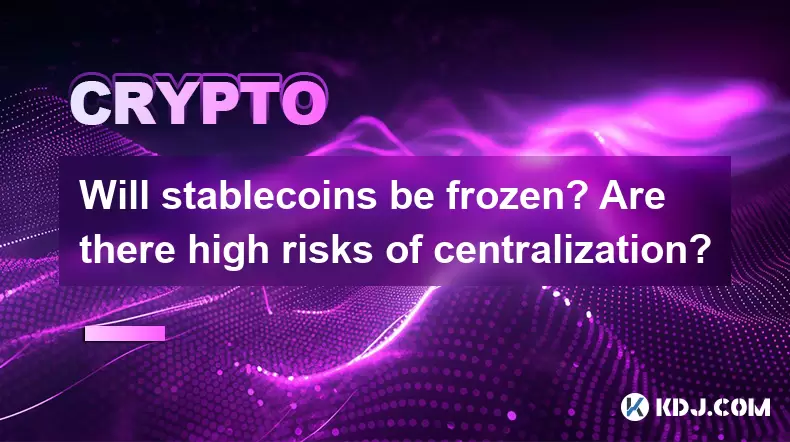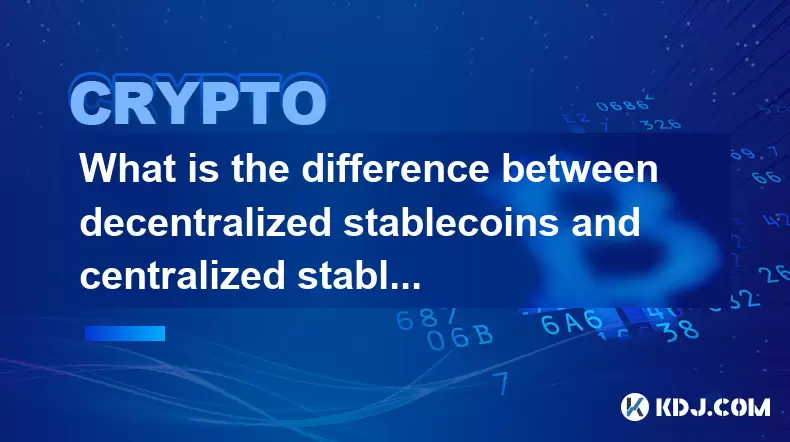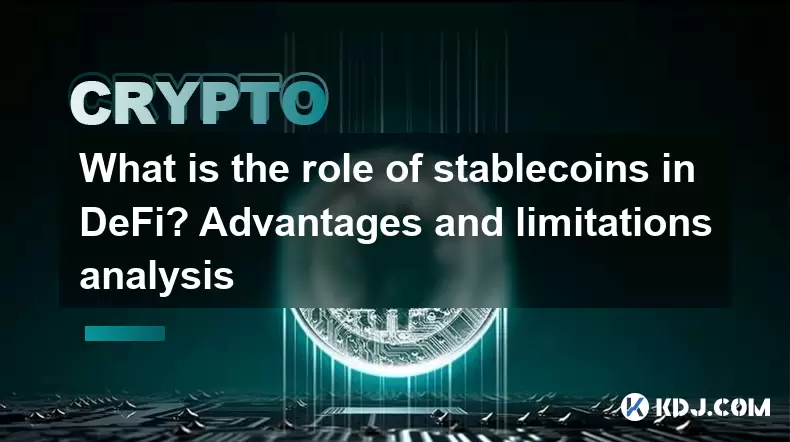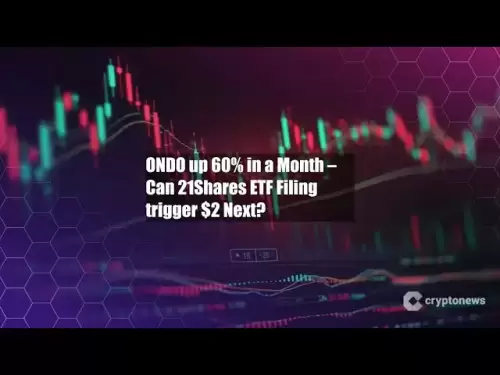-
 Bitcoin
Bitcoin $115100
-2.99% -
 Ethereum
Ethereum $3642
-1.38% -
 XRP
XRP $3.027
-5.51% -
 Tether USDt
Tether USDt $1.000
-0.05% -
 BNB
BNB $763.4
-1.32% -
 Solana
Solana $177.2
-5.42% -
 USDC
USDC $0.9999
-0.02% -
 Dogecoin
Dogecoin $0.2247
-6.47% -
 TRON
TRON $0.3135
0.23% -
 Cardano
Cardano $0.7824
-4.46% -
 Hyperliquid
Hyperliquid $42.53
-0.97% -
 Stellar
Stellar $0.4096
-6.09% -
 Sui
Sui $3.662
-2.61% -
 Chainlink
Chainlink $17.63
-3.57% -
 Bitcoin Cash
Bitcoin Cash $536.3
2.94% -
 Hedera
Hedera $0.2450
0.34% -
 Avalanche
Avalanche $23.23
-3.15% -
 Litecoin
Litecoin $112.2
-1.23% -
 UNUS SED LEO
UNUS SED LEO $8.976
-0.30% -
 Shiba Inu
Shiba Inu $0.00001341
-2.72% -
 Toncoin
Toncoin $3.101
-2.44% -
 Ethena USDe
Ethena USDe $1.001
-0.05% -
 Uniswap
Uniswap $10.08
-1.97% -
 Polkadot
Polkadot $3.938
-2.77% -
 Monero
Monero $323.9
0.87% -
 Dai
Dai $0.9999
-0.02% -
 Bitget Token
Bitget Token $4.481
-1.69% -
 Pepe
Pepe $0.00001199
-5.94% -
 Aave
Aave $288.2
-0.68% -
 Cronos
Cronos $0.1279
0.36%
Will stablecoins be frozen? Are there high risks of centralization?
Stablecoins bridge traditional finance and crypto but face risks of freezing due to regulatory actions and centralization concerns within the issuing entities.
May 17, 2025 at 03:43 pm

Stablecoins have become a cornerstone of the cryptocurrency ecosystem, offering a bridge between traditional finance and the volatile world of digital assets. However, concerns about their potential to be frozen and the risks of centralization have sparked significant debate within the crypto community. This article delves into these issues, exploring the mechanisms behind stablecoins, their susceptibility to being frozen, and the centralization risks associated with them.
Understanding Stablecoins
Stablecoins are cryptocurrencies designed to minimize the volatility typically associated with other digital assets like Bitcoin and Ethereum. They achieve this stability by pegging their value to a reserve asset, such as the US dollar, gold, or a basket of currencies. There are three main types of stablecoins: fiat-collateralized, crypto-collateralized, and algorithmic stablecoins.
- Fiat-collateralized stablecoins, like Tether (USDT) and USD Coin (USDC), are backed by reserves of traditional currency held in banks or other financial institutions.
- Crypto-collateralized stablecoins, such as DAI, use other cryptocurrencies as collateral to maintain their peg.
- Algorithmic stablecoins, like TerraUSD (UST), rely on algorithms to adjust the supply of the stablecoin to maintain its peg.
The Risk of Stablecoins Being Frozen
The possibility of stablecoins being frozen is a significant concern for users. This can happen due to regulatory actions, legal disputes, or internal policies of the issuing company. For instance, in 2020, Tether froze assets linked to a hacking incident, demonstrating the control that issuers can exert over their stablecoins.
Regulatory actions are a primary driver of freezing. Governments and financial authorities may demand that stablecoin issuers freeze assets associated with illegal activities, such as money laundering or terrorism financing. The Financial Action Task Force (FATF) has guidelines that encourage such actions, which can lead to stablecoins being frozen if they are found to be involved in illicit activities.
Legal disputes can also lead to freezing. If a stablecoin issuer is involved in a lawsuit, courts may order the freezing of assets to prevent them from being moved or hidden. This was seen in the case of Bitfinex and Tether, where New York authorities froze assets in a legal battle over alleged fraud.
Internal policies of stablecoin issuers can also result in freezing. Issuers may freeze accounts or transactions if they suspect fraudulent activity or if they need to comply with their terms of service. This is often done to protect the integrity of the stablecoin and its users, but it can lead to concerns about the level of control the issuer has over the funds.
Centralization Risks Associated with Stablecoins
The issue of centralization is another critical aspect of stablecoins that raises concerns within the crypto community. Centralization refers to the concentration of control over a stablecoin in the hands of a single entity or a small group of entities. This can pose significant risks to the stability and security of the stablecoin.
Fiat-collateralized stablecoins are inherently centralized because they rely on a reserve of traditional currency held by a central entity. This entity has the power to manage the reserves, issue new tokens, and, as discussed earlier, freeze assets. For example, Tether and USDC are managed by companies that hold the reserves and control the issuance of the stablecoins.
Crypto-collateralized stablecoins can also exhibit centralization risks, albeit to a lesser extent. While they are often built on decentralized platforms like Ethereum, the governance and management of the collateral and the stablecoin itself may be controlled by a central authority or a small group of stakeholders. For instance, MakerDAO, which issues DAI, has a governance structure that involves voting by token holders, but the process can still be influenced by a small number of large stakeholders.
Algorithmic stablecoins face unique centralization risks due to their reliance on algorithms to maintain their peg. While these stablecoins may not have a traditional reserve, the algorithms themselves can be controlled or influenced by a central entity. This was evident in the case of TerraUSD, where the collapse of the stablecoin led to significant losses for users and raised questions about the centralization of its governance.
Mitigating the Risks of Freezing and Centralization
To address the risks of freezing and centralization, several measures can be taken by stablecoin issuers and users.
- Transparency and Audits: Stablecoin issuers should provide regular audits of their reserves and operations to ensure transparency. This can help build trust with users and regulators, reducing the likelihood of freezing due to regulatory actions.
- Decentralized Governance: Implementing decentralized governance models can help mitigate centralization risks. This involves allowing token holders to participate in decision-making processes, reducing the control of a central entity.
- Diversification: Users can mitigate the risk of freezing by diversifying their holdings across multiple stablecoins and platforms. This can help ensure that they are not overly reliant on a single stablecoin that may be subject to freezing.
- Legal Protections: Stablecoin issuers can work with legal experts to ensure that their terms of service and operational practices are compliant with relevant regulations, reducing the risk of freezing due to legal disputes.
Case Studies: Real-World Examples of Freezing and Centralization
To better understand the risks associated with stablecoins, it is helpful to examine real-world examples where freezing and centralization have come into play.
- Tether (USDT): In 2020, Tether froze assets linked to a hacking incident, demonstrating its ability to control transactions. Additionally, Tether has faced scrutiny over its reserve transparency, raising concerns about centralization and the potential for freezing.
- USD Coin (USDC): USDC, issued by Circle, has also been subject to freezing. In 2022, Circle froze assets linked to a sanctioned entity, highlighting the impact of regulatory actions on stablecoins.
- DAI: While DAI is built on a decentralized platform, the governance of the stablecoin is managed by MakerDAO, which has faced criticism for its centralized decision-making processes. This has led to concerns about the potential for centralization and freezing.
- TerraUSD (UST): The collapse of TerraUSD in 2022 highlighted the risks of algorithmic stablecoins. The centralized control over the algorithms and the lack of transparency led to significant losses for users and raised questions about the stability and governance of the stablecoin.
Frequently Asked Questions
Q: Can stablecoins be used anonymously?
A: While some stablecoins may offer a degree of anonymity, most are subject to know-your-customer (KYC) and anti-money laundering (AML) regulations, which require users to provide personal information. This reduces the level of anonymity compared to other cryptocurrencies like Bitcoin.
Q: How do stablecoins maintain their peg?
A: Stablecoins maintain their peg through different mechanisms depending on their type. Fiat-collateralized stablecoins hold reserves of the pegged asset, crypto-collateralized stablecoins use other cryptocurrencies as collateral, and algorithmic stablecoins adjust their supply through algorithms to maintain the peg.
Q: Are there any decentralized stablecoins that are not subject to freezing?
A: While no stablecoin is entirely immune to freezing, some decentralized stablecoins, such as those built on decentralized platforms like Ethereum, may have lower risks of freezing due to their decentralized nature. However, even these stablecoins can be subject to freezing if they are involved in illegal activities or legal disputes.
Q: What role do stablecoins play in the broader cryptocurrency ecosystem?
A: Stablecoins serve as a bridge between traditional finance and the cryptocurrency ecosystem, providing stability and liquidity. They are used for trading, as a store of value, and as a means of payment within the crypto space, facilitating transactions and reducing the impact of volatility on users.
Disclaimer:info@kdj.com
The information provided is not trading advice. kdj.com does not assume any responsibility for any investments made based on the information provided in this article. Cryptocurrencies are highly volatile and it is highly recommended that you invest with caution after thorough research!
If you believe that the content used on this website infringes your copyright, please contact us immediately (info@kdj.com) and we will delete it promptly.
- Kaspa's Strongest Month REVEALED: New Data Shocks KAS Traders!
- 2025-07-26 04:30:12
- Crypto Losses: From ZIRP to Zero - How I Lost a Million Dollars (and What You Can Learn)
- 2025-07-26 04:30:12
- BONK's Wild Ride: Selling Pressure and Market Dip - A New Yorker's Take
- 2025-07-26 03:30:12
- Pepeto Presale Heats Up: Demo Trading and Meme Coin Mania!
- 2025-07-26 02:50:11
- WeWake, Nexchain AI, and the Crypto Presale Frenzy: What You Need to Know
- 2025-07-26 02:50:11
- Scottie Pippen's XRP Moonshot: A Slam Dunk or an Air Ball?
- 2025-07-26 03:30:12
Related knowledge

What is the difference between decentralized stablecoins and centralized stablecoins? Pros and cons comparison
Jun 15,2025 at 09:42am
What Are Stablecoins and Why Do They Matter?Stablecoins are a category of cryptocurrencies designed to maintain a stable value, usually pegged to an e...

What is the role of stablecoins in DeFi? Advantages and limitations analysis
Jun 14,2025 at 06:28am
Understanding Stablecoins in the DeFi EcosystemStablecoins play a pivotal role in the decentralized finance (DeFi) landscape by providing a bridge bet...

How do algorithmic stablecoins work? Potential risks and market impact
Jun 12,2025 at 02:07pm
Understanding Algorithmic StablecoinsAlgorithmic stablecoins are a type of cryptocurrency designed to maintain a stable value relative to a specific a...

How do stablecoins anchor legal currencies? Technical and economic model analysis
Jun 16,2025 at 08:43am
Understanding the Concept of StablecoinsStablecoins are a category of cryptocurrencies designed to maintain a stable value relative to a specific asse...

How do stablecoins maintain price stability? Principles and risk analysis
Jun 11,2025 at 12:01am
Understanding the Mechanisms Behind Stablecoin StabilityStablecoins are a category of cryptocurrencies designed to minimize price volatility, often pe...

What is the operating mechanism of stablecoins? In-depth exploration of its stability principle
Jun 10,2025 at 09:28pm
Understanding the Core Concept of StablecoinsStablecoins are a unique category within the cryptocurrency market, designed to address one of the most s...

What is the difference between decentralized stablecoins and centralized stablecoins? Pros and cons comparison
Jun 15,2025 at 09:42am
What Are Stablecoins and Why Do They Matter?Stablecoins are a category of cryptocurrencies designed to maintain a stable value, usually pegged to an e...

What is the role of stablecoins in DeFi? Advantages and limitations analysis
Jun 14,2025 at 06:28am
Understanding Stablecoins in the DeFi EcosystemStablecoins play a pivotal role in the decentralized finance (DeFi) landscape by providing a bridge bet...

How do algorithmic stablecoins work? Potential risks and market impact
Jun 12,2025 at 02:07pm
Understanding Algorithmic StablecoinsAlgorithmic stablecoins are a type of cryptocurrency designed to maintain a stable value relative to a specific a...

How do stablecoins anchor legal currencies? Technical and economic model analysis
Jun 16,2025 at 08:43am
Understanding the Concept of StablecoinsStablecoins are a category of cryptocurrencies designed to maintain a stable value relative to a specific asse...

How do stablecoins maintain price stability? Principles and risk analysis
Jun 11,2025 at 12:01am
Understanding the Mechanisms Behind Stablecoin StabilityStablecoins are a category of cryptocurrencies designed to minimize price volatility, often pe...

What is the operating mechanism of stablecoins? In-depth exploration of its stability principle
Jun 10,2025 at 09:28pm
Understanding the Core Concept of StablecoinsStablecoins are a unique category within the cryptocurrency market, designed to address one of the most s...
See all articles

























































































